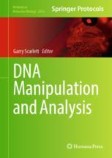Search
Search Results
-
Targeted accurate RNA consensus sequencing (tARC-seq) reveals mechanisms of replication error affecting SARS-CoV-2 divergence
RNA viruses, like SARS-CoV-2, depend on their RNA-dependent RNA polymerases (RdRp) for replication, which is error prone. Monitoring replication...

-
DREAMS: deep read-level error model for sequencing data applied to low-frequency variant calling and circulating tumor DNA detection
Circulating tumor DNA detection using next-generation sequencing (NGS) data of plasma DNA is promising for cancer identification and...

-
CARE 2.0: reducing false-positive sequencing error corrections using machine learning
BackgroundNext-generation sequencing pipelines often perform error correction as a preprocessing step to obtain cleaned input data. State-of-the-art...

-
Sequencing accuracy and systematic errors of nanopore direct RNA sequencing
BackgroundDirect RNA sequencing (dRNA-seq) on the Oxford Nanopore Technologies (ONT) platforms can produce reads covering up to full-length gene...

-
Next Generation Sequencing in Healthcare
With the fast development and broad application of next-generation sequencing (NGS) technology, data on genomic sequences is now reaching the aims of...
-
Estimating sequencing error rates using families
BackgroundAs next-generation sequencing technologies make their way into the clinic, knowledge of their error rates is essential if they are to be...

-
Digital RNA sequencing using unique molecular identifiers enables ultrasensitive RNA mutation analysis
Mutation analysis is typically performed at the DNA level since most technical approaches are developed for DNA analysis. However, some applications,...

-
Nanopore Sequencing for Mixed Samples
Long read Nanopore sequencing can be utilised to determine the quality and accuracy of genetically engineered changes in animals, which often produce...
-
DNA Sequencing Technologies and DNA Barcoding
DNA barcodes are short, standardized DNA segments that geneticists can use to identify all living taxa. On the other hand, DNA barcoding identifies...
-
TILLING by Sequencing
The Targeting Induced Local Lesions In Genome (TILLING) is emerging as a preferred technique of reverse genetics. The use of next generation...
-
Application of Deep Sequencing in Phage Display
This chapter describes the workflow to implement deep sequencing into standard phage display experiments on protein libraries. By harvesting the...
-
NextDenovo: an efficient error correction and accurate assembly tool for noisy long reads
Long-read sequencing data, particularly those derived from the Oxford Nanopore sequencing platform, tend to exhibit high error rates. Here, we...

-
Sequencing by avidity enables high accuracy with low reagent consumption
We present avidity sequencing, a sequencing chemistry that separately optimizes the processes of step** along a DNA template and that of...

-
Sequencing and Assembly of Polyploid Genomes
Polyploidy has been observed throughout major eukaryotic clades and has played a vital role in the evolution of angiosperms. Recent polyploidizations...
-
Revolutionizing Genomics: Exploring the Potential of Next-Generation Sequencing
Next-generation sequencing (NGS) technologies have revolutionized the field of genomics by enabling high-throughput, cost-effective, and rapid DNA...
-
Lerna: transformer architectures for configuring error correction tools for short- and long-read genome sequencing
BackgroundSequencing technologies are prone to errors, making error correction (EC) necessary for downstream applications. EC tools need to be...

-
Specific-Locus Amplified Fragment Sequencing (SLAF-Seq)
Specific length amplified fragment sequencing (SLAF-seq) technology is a simplified genome sequencing technology based on next-generation sequencing....
-
An overlooked phenomenon: complex interactions of potential error sources on the quality of bacterial de novo genome assemblies
BackgroundParameters adversely affecting the contiguity and accuracy of the assemblies from Illumina next-generation sequencing (NGS) are well...

-
Amplicon Sequencing Pipelines in Metagenomics
Taxonomic profiling among a large number of samples is a fundamental task during amplicon sequencing analysis. The heterogeneity and technical noises...
-
cgMSI: pathogen detection within species from nanopore metagenomic sequencing data
BackgroundMetagenomic sequencing is an unbiased approach that can potentially detect all the known and unidentified strains in pathogen detection....

